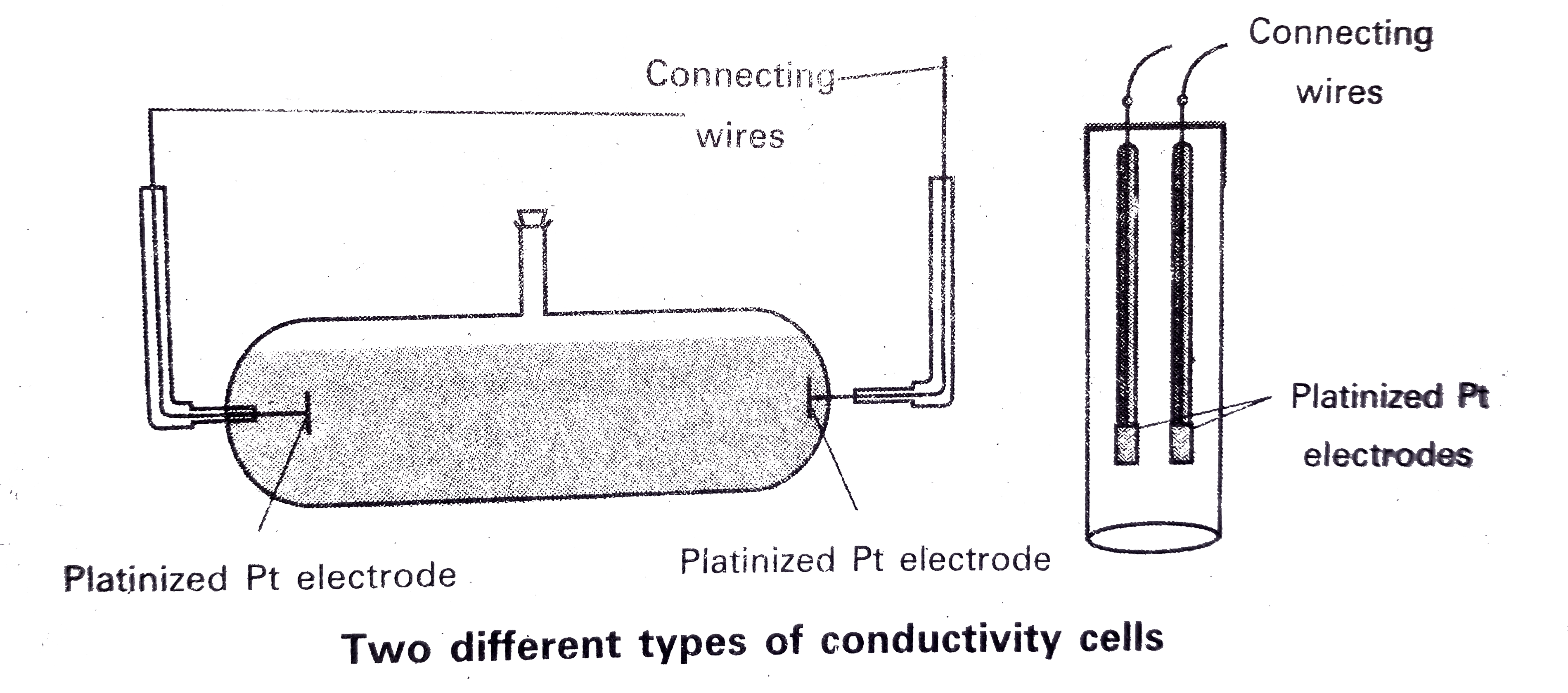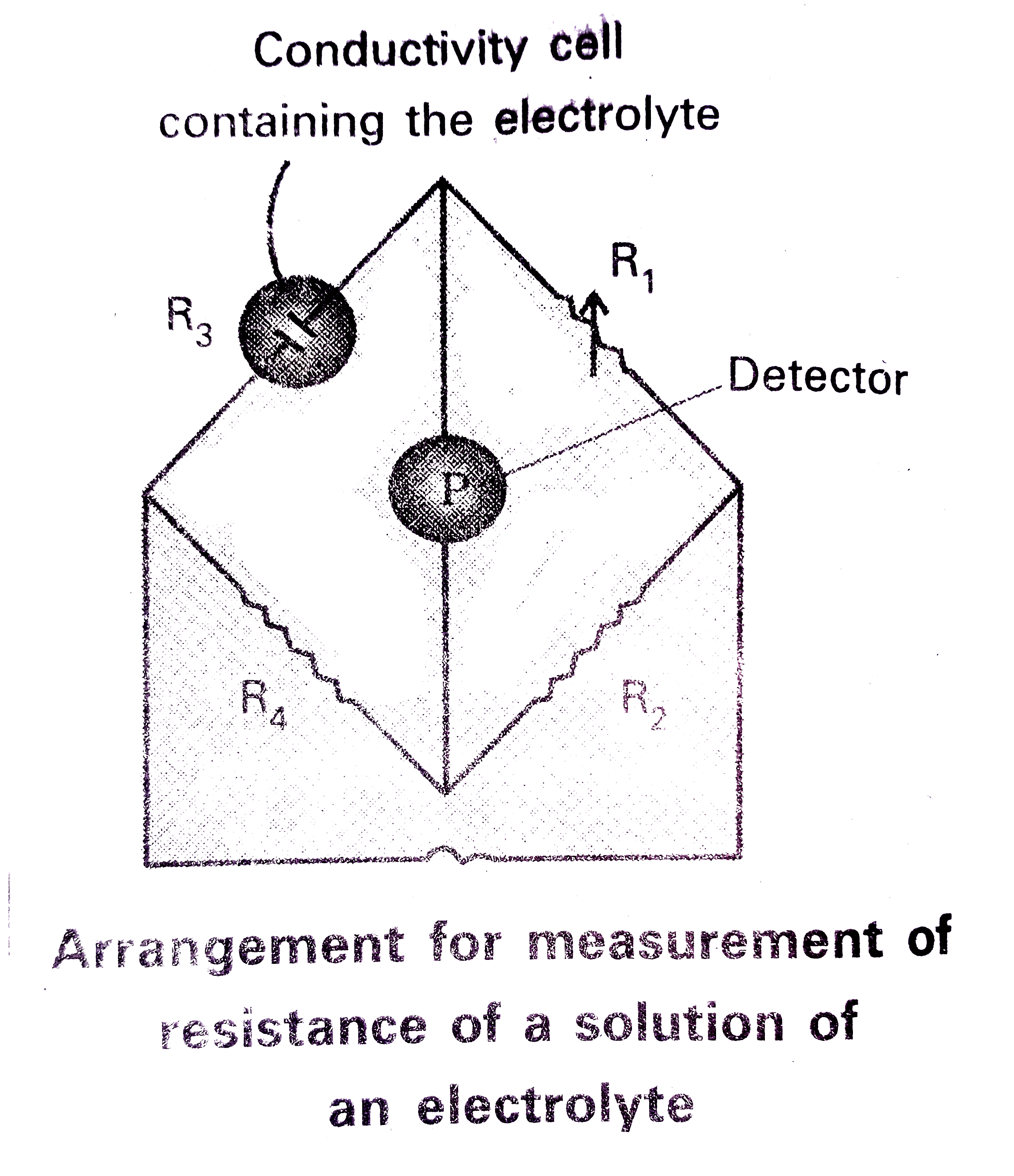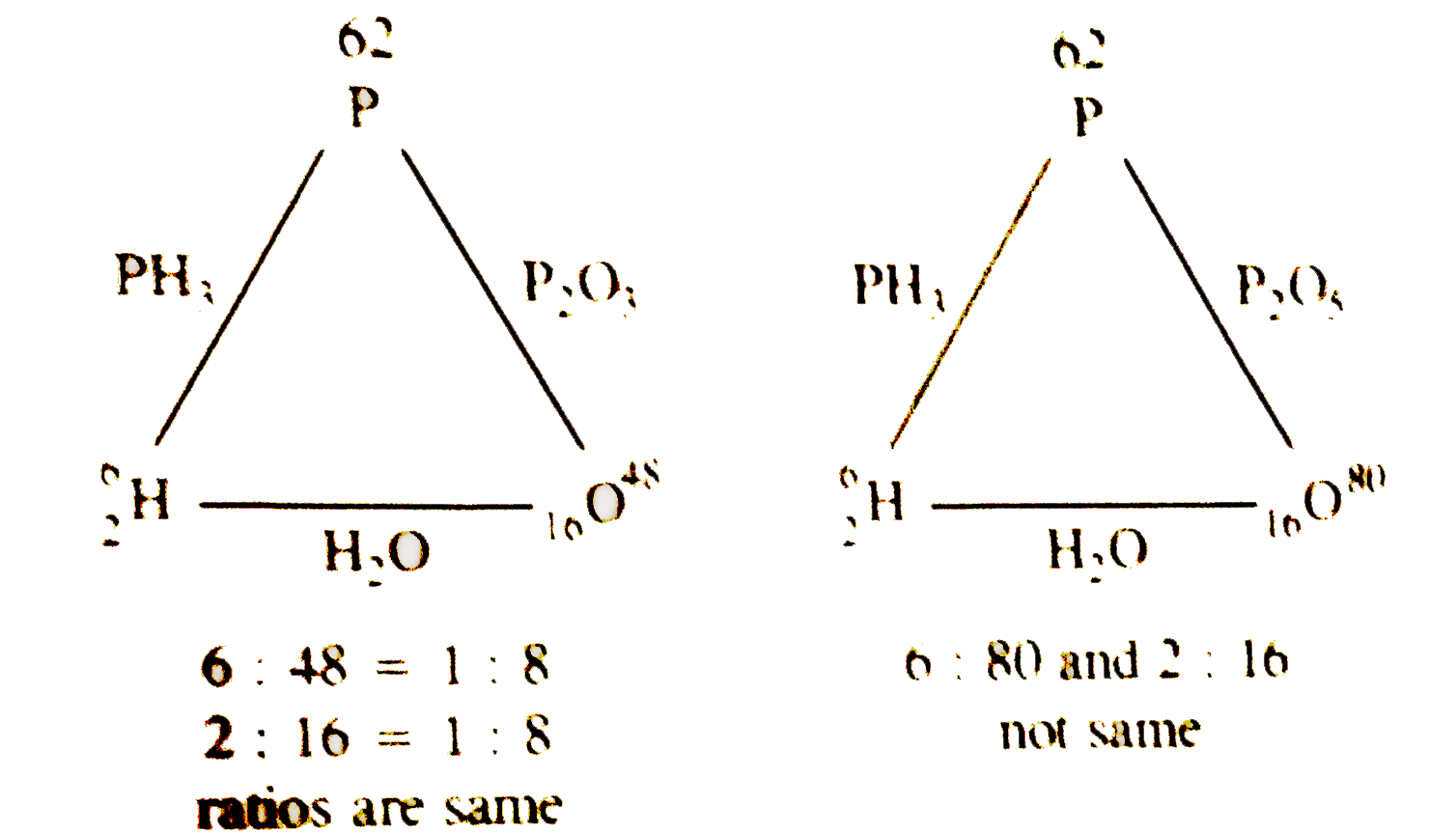InterviewSolution
This section includes InterviewSolutions, each offering curated multiple-choice questions to sharpen your knowledge and support exam preparation. Choose a topic below to get started.
| 6801. |
Which of the following react with dil. H_(2)SO_(4).? |
|
Answer» `CaCO_(3)` Hence,(A),(B),(C) and (D) are the correct ANSWERS. |
|
| 6802. |
Two samples of DNA , A and B have melting temperatures (T_m) 340 and 350 K respectively. Can you draw any conclusion from these data regarding their base content ? |
| Answer» SOLUTION :We KNOW that CG base pair has three H-bonds and AT base pair has two H-bonds, therefore, CG base pair is more stable than AT base pair. Since sample B has higher melting TEMPERATURE than sample A, therefore, sample B has higher CG content as compound to sample A. | |
| 6803. |
There are four complexes of Ni. Select the complex(es) which will be attracted by magnetic field: (I) [Ni(CN)_4]^(2-) (II) [NiCl_(4)]^(2-) (III) Ni(CO_(4)) (IV) [Ni(H_(2)O)_(6)]^(2+) |
|
Answer» I only |
|
| 6804. |
What is an ambidentate group? |
| Answer» SOLUTION :It is an ION or group which can ATTACK from both SIDES, e.g., `C -= N^(-)` | |
| 6805. |
Which of the following is /are organometallic compound(s) ? 1) C_(2)H_(5)MgI 2) C_(2)H_(5)ONa 3) (CH_(3)COO)_(2)Ca 4) CH_(3)COOK |
|
Answer» only 1 |
|
| 6806. |
Which of the following are not thermosetting polymers ? |
|
Answer» BAKELITE |
|
| 6807. |
What is AZT ? To which use is it being put? |
| Answer» SOLUTION :AZIDOTHYMIDINE USED for AIDS VICTIMS. | |
| 6808. |
Which is not true for ozone ? |
|
Answer» It oxidizes LEAD sulphide |
|
| 6809. |
What is the composition of colloidion solution ? |
| Answer» SOLUTION :`4%` solution of NITROCELLULOSE in a MIXTURE of ALCOHOL and ether . | |
| 6810. |
Which of the following halide of group 13 elements does not exists: |
|
Answer» THALIUM (I) iodide |
|
| 6811. |
Which of the following elements does not show alltropy? |
|
Answer» Nitrogen |
|
| 6812. |
Xenon forms fluoride easily. Explain. |
| Answer» Solution :FLUORINE is highly ELECTRONEGATIVE. When it reacts with xenon ATOM, energy is RELEASED and helps to form fluoride easily. | |
| 6813. |
Volatile metals are purified by: |
|
Answer» Liquation |
|
| 6814. |
Which of the following is not a peroxy acid ? |
|
Answer» Perphosphoric acid |
|
| 6815. |
What is electrical conductance of a solution ? How is it measured experimentally ? |
|
Answer» Solution :The reciprocal of resistance (R ) is known as conductane (c ) `l/R=k xx(l)/(l//A)` `c=k xx(l)/(l//A)` `to` The conductance or the current conducting capacity of an electrolytic solution can be expressed as i) Specific conductance (k), ii) Molar conductivity `(^^_(m))` i) Specific conductance : The conductance of the solution enclosed between two parallel electrodes of unit area of cross section separated by unit distance is CALLED specific conductance (k). ii) Molar conductivity `(^^_(m)):` The conductivity of a volume of solution containing one gram molecular weiht of the electrolyte placed between two parallel electrodes separated by a distance of unit length of 1 meter is called molar conductivity `(^^_(m))` Relation between conductivity and molar conductivity : `^^_(m) =k/c,therefore c=` CONSTANT Measurement of electrical conductance : `to` The resistance of a metallic wire can be measured with a WHEATSTONE bridge. `to` In measuring the resistance of an electrolytic solution tow problems are identified. i) On PASSING direct current (DC) through the solution charges the composition of the solution due to electrolysis. ii) A solution cannot be connected to the mmeasuring bridge like a metallic wire. ` to` ii) A solution cannot be connected to the measuring bridge like a metallic wire. `to` First proble solved by using AC instead of DC. `to` Second problem solved by using specilly designed vessel called conductivity cell.  By using above cells, Resistance `R=(l)/(k xxA)` l = distance between electrodes : A = Area of cross section, k = conductivity `l/A` = cell constant `=G^(**)` `therefore G^(**)=l/A =Rxxk` The cell constant `(G^(**))` is determinded by measuring the resistance of the cell containing a solution whose conductivity is already known `to` Cell constant once determined, used for measuring the resistance (or) conductivity. `to` The set up for the measurement of the resistance is shown in following figure. Unknown resistance `R_(2) =(R_(1)R_(4))/(R_(3))` Conductivity of solution `(k) =("Cell constant " (G^(**)))/(R)` Molar conductivity `^^_((m))=k/c =(k (S CM ^(-1)))/(1000(Lm^(-3))xx"Molarity (moles//lit)")` 
|
|
| 6816. |
Which of the following conditions is favourable for the production of ammonia by Haber's process |
|
Answer» HIGH concentration of reactants |
|
| 6817. |
Which is the incorrect statement. |
|
Answer» Density decreases in case of crystals with Schottky's DEFECT |
|
| 6818. |
Which of the followingis resistant to boiling aqua-regia |
|
Answer» Polythene |
|
| 6819. |
Two different electrolytic cells filled with molten Cu(NO_(3) )_( 2) and molten A1(NO_(3) )_( 3) respectively are connected in series. When electricity is passed 2.7 g Al is deposited on electrode. The mass of Cu deposited on cathode will be: |
|
Answer» `190.5` G |
|
| 6820. |
Write the names associated with the following reactions : (a) RCONH_(2)+Br_(2)+4NaOH rarr RNH_(2)+Na_(2)CO_(3)+2NaBr+2H_(2)O (b) ArN_(2)^(+)X^(-) overset(CuCN//KCN)(rarr)ArCN+N_(2) (c) R-NH_(2)+CHCl_(3)+3KOH overset("Heat")R-NC+3KCl+3H_(2)O (d) ArN_(2)^(+)X overset(Cu//HCl)(rarr) ArCl+N_(2)+CuX |
Answer» SOLUTION :
|
|
| 6821. |
Which of the following alcohols will yield the corresponding alkyl chlride on reaction with concentrated HCl at room temperature ? |
|
Answer» `CH_(3)CH_(2)-CH_(2)-OH` |
|
| 6822. |
Which halogen shows some metallic character ? |
|
Answer» `F_2` |
|
| 6823. |
Which of the following compounds can form a zwitterion ? |
|
Answer» BENZOIC acid |
|
| 6825. |
The vapour pressure of pure benzene at a certain temperature is 0.500 bar. A non-volatile, non-electrolyte solid weighing 0.5 g is added to 39.0 g of benzene (molar mass "78 g mol"^(-1)). The vapour pressure of the solution then is 0.845 bar. What is the molar mass of the solid substance ? |
|
Answer» SOLUTION :Here, we are GIVEN that `w_(2)=0.5 g, w_(1)=39.0g, M_(1)="78 g mol"^(-1)` `p^(@)="0.850 BAR, "p_(s)="0.845 bar"` SUBSTITUTING these VALUES in the formula, `(p^(@)-p_(s))/(p^(@))=(n_(2))/(n_(1))=(w_(2)//M_(2))/(w_(1)//M_(1))=(w_(2)M_(1))/(w_(1)M_(2))`, we get `=("0.850 bar"-"0.845 bar")/("0.850 bar")=(0.5 gxx"78 g mol"^(-1))/(39.0g xxM_(2))` `"or"M_(2)=(0.5xx78)/(39.0)xx(0.850)/(0.005)" g mol"^(-1)="170 g mol"^(-1)` |
|
| 6826. |
Wtite the molecular composition of the following ores and mentions it metal magnitude, calamine and bauxite. |
Answer» SOLUTION :
|
|
| 6827. |
Which of the metals doesnot corrode inspite of favourable standard electrode potential? |
|
Answer» `Ti` Similarly `Ti` (which is often used tomake sports bikes) does not corrode becuase of a hard, impenetrable layer of `TiO_(2)` that adheres to the surgace and protects THEMETAL form further oxidation. |
|
| 6828. |
Which of the following is an ester ? |
|
Answer» Soap |
|
| 6829. |
What is flux? How is it useful ? |
|
Answer» Solution :Flux is a substance which combines with gangue (impurities) present in ROASTED ORE to form easily FUSIBLE material CALLED slag. Flux + Gangue `to` Slag Thus, flux helps to remove impurities from the roasted or calcinedore. |
|
| 6830. |
When a glycine sol is prepared in NaOH the sol is |
|
Answer» Positive |
|
| 6831. |
Which allotrope of sulphur is thermally stable at room temperature ? |
| Answer» SOLUTION :Yellow rhombic SULPHUR is THERMALLY stable at ROOM temperature. | |
| 6832. |
We can drive any thermodynamically forbidden reaction in the desired direction by coupling with: |
|
Answer» HIGHLY EXOTHERMIC REACTION |
|
| 6833. |
What is the shortest wavelength in Bracket series of He^(+) spectrum ? |
|
Answer» `(100)/(9R_(H))` `(1)/(lambda_("min")) = R_(H) XX 2^(2) ((1)/(4^(2)) - (1)/(oo^(2))) rArr lambda_("min") = (4)/(R_(H))` |
|
| 6834. |
Which is main component of starch ? |
| Answer» Solution :Glucose | |
| 6835. |
Which of the following is most solublein water ? |
|
Answer» Normal BUTYL ALCOHOL |
|
| 6836. |
Which compound will react with an aqueous solution of Ag(NH_3)_2^+ OH^- |
|
Answer» `CH_3 - C -= C - CH_3` |
|
| 6837. |
Which of the following has highest solubility in water |
|
Answer» F |
|
| 6838. |
Which of the following sets of compounds correctly ltbr. Illustrate the law of reciprocal proportions? |
|
Answer» <P>`P_(2)O_(3), PH_(3), H_(2)O`  Similarly CHECK for other cases |
|
| 6839. |
Which compound is generally used in making optical glasses such as Crooke's lenses which protect eyes against UV light ? |
| Answer» Solution :LANTHANUM OXIDE `(La_(2) O_(3))` | |
| 6840. |
XePtF_6 (yellow solid) was prepared by J.Thomson. true/false |
| Answer» SOLUTION :Berlettc | |
| 6841. |
The solution in which the light is scattered by the particles is : |
|
Answer» suspension |
|
| 6842. |
Which is cheaper : 40% hydrochloric acid at the rate of 50 paise per kilogram of 80%H_(2)SO_(4) at the rate of 25 paise per kilogram to completely neutralize 7 kg of caustic potash? |
|
Answer» `"PURE HCl required for 7 kg KOH "=(36.5)/(56)xx7=4.5625kj` `40%" HCl acid required "=(100)/(40)xx4.5625=11.40625kg` `"Cost "=11.40625xx50p=Rs.5.70p.` `underset(2xx56kg)(2KOH)+underset(98kg)(H_(2)SO_(4))rarr K_(2)SO_(4)+2H_(2)O` Proceed as above to calculate the cost of `80% H_(2)SO_(4).` |
|
| 6843. |
The structure of the intermediate product formed by the oxidation of toluene with CrO_(3) and acetic anhydride, whose hydrolysis gives benzaldehyde is_____. |
| Answer» SOLUTION :`C_(6)H_(5)CH(OCOCH_(3))_(2)` | |
| 6844. |
Vapour presure of chloroform (CHCI_(3)) and dichloromethane (CH_(2)CI_(2)) at 25^(@)C are 200 mm Hg and 41.5 mm Hg respectively Vapour pressure of the solution obtained by mixing 25.5 g or CHCI_(3) and 40g of CH_(2)CI_(2) at the same temperature will and 40 g of CH_(2)CI_(2) at the same temperature will be (("Molecular mass of" CHCI_(3) = 119.5 u and molecular mass 0 CH_(2)CI_(2) = 85 u) |
|
Answer» 173.9 mm Hg `"Moles of "CHCI_(3) "Mass"/"Molecular mass"=25.5/119.5 = 0.213` `"Moles of " CH_(2)CI_(2) = 40/85 = 0.470` `X_(CHCI_(3)) = 0.213/(0.213 + 0.470) = 0.31` `X_(CH_(2)CI_(2))= 0.470/(0.213 + 0.470)=0.69` `P_(T) = P^(o_(CHCI_(3))) X_(CHCI_(3)) + P^(o_(CH_(2)CI_(2)))X_(CH_(2)CI_(2)` `P_(T) = 200 xx 0.31 + 41.5 xx 0.69 ` `P_(T) = 62 + 28.63 = 90.63` |
|
| 6845. |
Which of the following series contains only electrophiles? |
|
Answer» `H_(2)O,SO_(3),H_(3)O^(+)` |
|
| 6846. |
Which compound on reaction with ethyl magnesium bromide and water will form 2-methyl-2-butanol ? |
|
Answer» `C_(2)H_(5)COCH_(3)` |
|
| 6847. |
Which of the following numbers have same significant figures? |
|
Answer» 0.06 |
|
| 6848. |
Which one of the following is used as a hypnotic? |
|
Answer» Acetaldehyde |
|
| 6849. |
Which of the following can adsorb large volume of hydrogen gas? |
|
Answer» Finely divided PLATINUM |
|
| 6850. |
Which of the following statements (are) correct ? |
|
Answer» Nitration of phenol is faster than PHENYL acetate. |
|